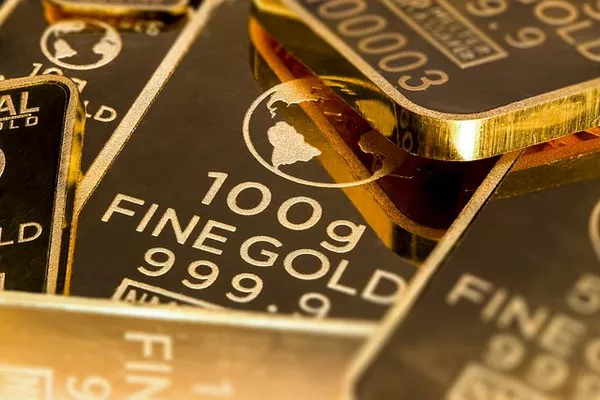In recent times, the price of gold has experienced a significant decline, leaving investors and analysts alike pondering the reasons behind this unexpected downturn. Traditionally viewed as a safe-haven asset, gold’s retreat from its historical highs has sparked discussions and speculation within financial circles. In this article, we delve into the multifaceted factors contributing to the decline in gold prices and explore the potential implications for investors and the broader economy.
Strength of the U.S. Dollar
One of the primary factors influencing the price of gold is the strength of the U.S. dollar. Gold is priced in dollars, and as the value of the dollar rises, the cost of gold in other currencies tends to increase, leading to a potential decrease in demand. In recent months, the U.S. dollar has exhibited strength, partly driven by robust economic data and the Federal Reserve’s monetary policy decisions. Investors seeking returns may find the higher interest rates in the U.S. more attractive, diverting funds from gold to interest-bearing assets.
Rising Interest Rates
The inverse relationship between interest rates and gold prices is a well-established economic principle. When interest rates rise, the opportunity cost of holding non-yielding assets like gold increases, prompting investors to allocate their funds to interest-bearing investments. The Federal Reserve’s decision to raise interest rates or signal an intention to do so can have a profound impact on gold prices. As central banks globally consider tightening monetary policies, the specter of higher interest rates looms over the precious metal market, contributing to its recent decline.
Global Economic Recovery
The ongoing global economic recovery, albeit uneven, has also played a role in gold’s downturn. As economies rebound from the impacts of the COVID-19 pandemic, investor sentiment has shifted towards riskier assets like equities, at the expense of traditional safe-haven assets such as gold. Confidence in economic recovery can lead investors to seek higher returns in riskier but potentially more lucrative investments, diminishing the appeal of gold as a wealth preservation tool.
Cryptocurrency Competition
The emergence and growing popularity of cryptocurrencies, such as Bitcoin, have introduced a new dynamic to the investment landscape. Some investors view cryptocurrencies as a modern alternative to traditional stores of value like gold. The speculative nature of cryptocurrencies and their potential for substantial returns can divert funds away from gold markets. The rise of digital assets has added a layer of complexity to the investment choices available, and gold, being a more traditional asset, may face increased competition in this evolving landscape.
Reduction in Inflation Concerns
Historically, gold has served as a hedge against inflation, as its value tends to rise during periods of higher inflation. However, with inflation concerns easing in some regions, particularly in the United States, investors may perceive less urgency in holding gold as an inflationary hedge. Central banks closely monitor inflation metrics, and their policies to address inflationary pressures can impact the demand for gold. A perception of lower inflation risk may contribute to the recent decline in gold prices.
See Also: What Is The Price Of An Ounce Of Gold
Technical Factors and Market Sentiment
Market dynamics and investor sentiment also play a crucial role in determining the price of gold. Technical factors, such as chart patterns and trading volumes, can influence short-term price movements. Additionally, sentiment among market participants, influenced by geopolitical events, economic data releases, and global uncertainties, can lead to swift changes in demand for gold. The recent decline in gold prices may be partly attributed to a shift in market sentiment as investors reassess their portfolios in light of changing economic conditions.
Conclusion
While the decline in gold prices can be attributed to a combination of factors, it is essential for investors to recognize the dynamic nature of financial markets. The interplay between global economic conditions, interest rates, currency strength, and evolving investment trends contributes to the complexity of predicting the trajectory of gold prices. As the investment landscape continues to evolve, staying informed about the various factors influencing gold prices will be crucial for making well-informed investment decisions. Investors should consider a diversified approach to their portfolios, taking into account the changing dynamics of traditional and emerging asset classes. In this dynamic environment, adaptability and a nuanced understanding of market forces will be key to navigating the fluctuations in the price of gold and other precious metals.


